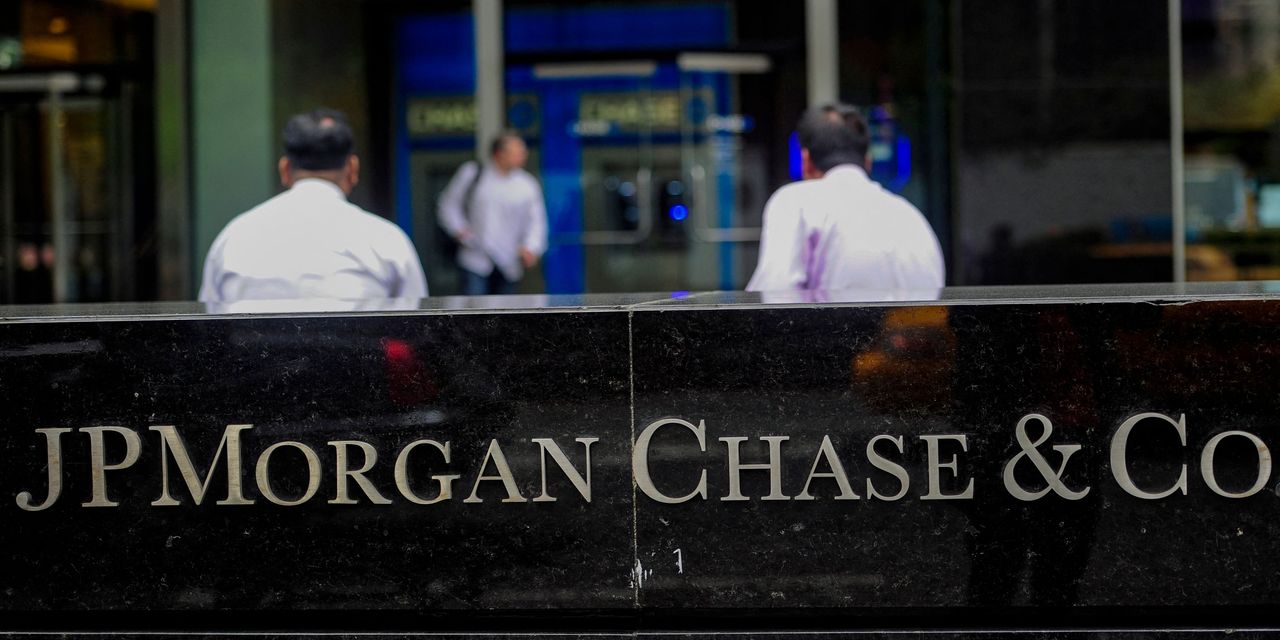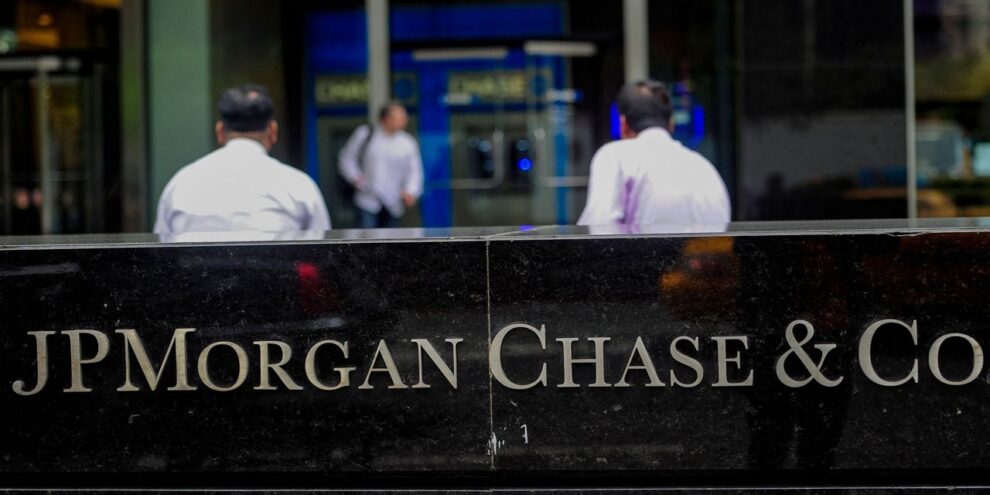
U.S. stocks closed mixed Friday, but all three major indexes suffered weekly losses as the prospect of rising interest rates and weaker economic data cast some doubt on the strength of the recovery from the COVID-19 pandemic.
New York Fed President John Williams, a key ally of Fed Chairman Jerome Powell, said Friday that he expects economic growth to slow in 2022 to a 3.5% annual rate, from an estimated 5.5% rate last year, on the spread of omicron.
What did stock indexes do?
- The Dow Jones Industrial Average DJIA, -0.56% dropped 201.81 points, or 0.6%, to close at 35,911.81, weighed by declines in shares of Goldman Sachs Group Inc. GS, -2.52%, JPMorgan Chase & Co. JPM, -6.15% and American Express Co. AXP, -2.82%
- The S&P 500 SPX, +0.08% edged up 3.82 points, or 0.1%, to end at 4,662.85.
- The Nasdaq Composite Index COMP, +0.59% advanced 86.94 points, or 0.6%, to finish at 14,893.75, after flipping between gains and losses during the trading session.
On Thursday, the Dow fell 177 points, or 0.49%, to 36114, the S&P 500 declined 67 points, or 1.42%, to 4659, and the Nasdaq Composite dropped 382 points, or 2.51%, to 14807.
For the week, the Nasdaq Composite and S&P 500 each slipped 0.3% while, the Dow fell 0.9%. The Nasdaq has fallen for three straight weeks, while the S&P 500 and Dow each booked two consecutive weeks of losses, according to Dow Jones Market Data.
What the drove market?
Stocks ended mixed Friday after sentiment on Wall Street appeared to sour in a tumultuous week of trade on heightened anticipation for higher interest rates and concerns over the economic outlook.
Federal Reserve officials have been signaling plans to begin tightening monetary policy through rate hikes this year to help combat hot inflation.
“The discussion on inflation is getting real,” said Tim Pagliara, chief investment officer of CapWealth, in a phone interview Friday. “It’s really a time to say ‘time out,’ and the Fed, Congress and the executive branch of government have to work to solve this problem.”
Concerns about the near-term economic outlook and a bumpy rotation from highflying stocks to cyclicals appeared to contribute to market volatility.
“I expect the current omicron wave to slow growth in the next few months as people once again pull back from contact-intensive activities,” New York Fed President John Williams said Friday in remarks to the Council on Foreign Relations.
The U.S. Department of Commerce released data Friday showing retail sales dropped 1.9% in December, exceeding the 0.1% decline forecast by economists polled by The Wall Street Journal.
“Consumer price inflation could be weighing on retail spending,” along with the rapid spread of the omicron variant, said Giorgio Caputo, head of the multiasset value team at J O Hambro Capital Management, in a phone interview Friday. “It’s always very hard to figure out what keeps people away from purchases.”
Some of the sharp decline in retail sales in December may be the result of households getting an earlier jump on their holiday shopping in October due to concern over “goods shortages and shipping delays” in the pandemic, Barclays said in an economics research report Friday.
“Adverse effects on spending from the omicron variant” may also have contributed to the drop, including in categories such as restaurants and in-store purchases, said Barclays. “Inflation-adjusted (real) disposable incomes of households have been trending lower in recent months,” also possibly hurting spending.
In remarks Friday, New York Fed President Williams predicted inflation will ease from its current brisk pace. “With growth slowing and supply constraints gradually being resolved, I expect inflation to drop to around 2.5% this year,” he said.
Federal Reserve Gov. Christopher Waller suggested in a Bloomberg TV interview earlier this week that as many as five interest-rate increases are possible in 2022, as the central bank aims to beat back rampant inflation. The policy maker said three rate hikes were a “good baseline” this year, though.
Meanwhile, a closely followed gauge of U.S. consumer sentiment fell to 68.8 in January from 70.6 in the prior month, marking the second-lowest reading in a decade, with omicron concerns partly attributed to its drop-off.
Robert Frick, corporate economist with Navy Federal Credit Union, said that the fall in consumer sentiment reflects the pain lower-income Americans are facing amid inflation.
“January’s Consumer Sentiment reading starkly underscores how high inflation hurts lower-income households most,” he wrote in emailed comments.
“Sentiment fell sharply for households earning less than $100,000, but rose for those earning above that level. Especially with energy and food prices so high, which take up a much higher percentage of lower-income budgets than other expenses, financial stress is mounting on the 70% of U.S. households below the $100,000 threshold,” he said.
In other economic data, U.S. industrial output fell 0.1% in December, after a revised 0.7% gain in the prior month, and industrial-capacity use edged down to 76.5% last month versus 76.6% in the prior month.
Which companies were in focus?
- Banks including JPMorgan Chase & Co. JPM and Wells Fargo WFC each reported stronger fourth-quarter earnings than forecast. Citigroup C, -1.25% posted a decline in its quarterly profit. Citi’s shares fell around 1.3%, those for Wells Fargo climbed 3.7% and JPMorgan’s stock dropped around 6.2%.
- Asset manager BlackRock BLK, -2.19% reported that its assets under management reached $10 trillion. However, the firm’s stock fell 2.2%.
- Shares of paint-maker Sherwin-Williams SHW, -2.81% declined 2.8% after it lowered its guidance, citing supply shortages.
- Tesla’s stock TSLA, +1.75% was in focus after its CEO, Elon Musk, said the electric-vehicle maker would accept meme asset dogecoin DOGEUSD, +0.60% as payment for some merchandise. Shares of Tesla rose around 1.8% while dogecoin changed hands at about 19 cents, up about 11.7%.
- Shares of Google parent Alphabet GOOG, +0.47% GOOGL, +0.64% were in focus after The Wall Street Journal reported that Google misled publishers and advertisers for years about the pricing and processes of its ad auctions. Alphabet’s Class A shares edged up 0.6%.
How did other assets fare?
- The yield on the 10-year Treasury note TMUBMUSD10Y rose 6.3 basis points Friday to 1.771%. Yields and debt prices moved opposite each other.
- The ICE U.S. Dollar Index DXY, a measure of the currency against a basket of six major rivals, was up 0.4% Friday but still saw a weekly decline of about 0.6%.
- Oil futures CL00 for West Texas Intermediate crude rose 2.1% to settle at $83.82 a barrel for a weekly gain of 6.2%. Gold futures GC00 for February delivery fell 0.3% to settle at $1,816.50 an ounce.
- Bitcoin BTCUSD was up 1% at $43,079 and looking at a weekly gain of 3.9%, FactSet data show.
- In European equities, the Stoxx Europe 600 SXXP ended 1% lower Friday, booking a similar decline for the week. London’s FTSE 100 UKX declined 0.3% Friday but managed a weekly advance of 0.8%.
- In Asia, the Shanghai Composite SHCOMP fell 1%, contributing to a 1.6% weekly skid, while the Hang Seng Index HSI gave up 0.2% in Hong Kong but notched a 3.8% weekly climb, and Japan’s Nikkei 225 NIK, -1.28% shed 1.3% on the session contributing to a 1.2% weekly slump.
—Steve Goldstein contributed to this article.








